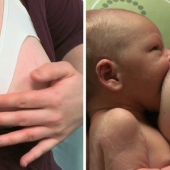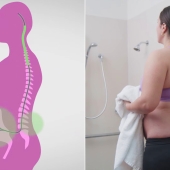A breech position means that your baby is lying bottom first or feet first in the womb (uterus). A more common position is when babies head is first. In early pregnancy a breech position is very common but as the pregnancy continues, a baby usually turns by itself into the head first position. Between 37 and 42 weeks (referred to as term), most babies are lying head first, ready to be born.
What is External Cephalic Version (ECV)
Your obstetrician or midwife may advise trying to turn your baby into a head first position. This technique is called external cephalic version (ECV). This is when gentle pressure is applied on to your abdomen which helps the baby turn in the womb to lay head first.
Does ECV always work?
ECV is successful for about half of all women. Your obstetrician or midwife will provide you with information about your own individual chance of success. Relaxing the muscles of the womb with medication during an ECV is likely to improve the chances of success. This medication will not affect the baby. You can help by relaxing your abdominal (tummy) muscles.
If your baby remains breech, your choices may include a:
Caesarean delivery – this is a surgical operation where a cut is made in your lower abdomen to allow your baby to be delivered. Caesarean delivery carries a slightly higher risk for you, compared with the risk of having a vaginal breech birth. Caesarean delivery does not carry any long-term risks to your health outside of pregnancy. However, there may be long-term effects in future pregnancies for either you and/or your babies.
Vaginal breech birth – There are benefits and risks associated with both caesarean delivery and vaginal breech birth and these should be discussed with your obstetrician and/or midwife. This will help you decide the best plan for you and your baby. A vaginal breech delivery may not be recommended as safe in all circumstances. It is a more complicated birth, as the largest part of the baby is last to be delivered and in some cases this may cause difficulty.
What will happen?
The obstetrician will use their hands to gently encourage the baby to turn around. You can help by relaxing your tummy muscles (ECV can be uncomfortable but should not be painful). Please try to tolerate the procedure as long as you can to increase the chances of turning your baby to a head first position. If you are experiencing pain please tell the obstetrician so they can move their hands or stop. Sometimes the baby’s heart rate can slow down during the procedure. Please do not worry this is only temporary and the midwife and obstetrician will be observing you and baby closely.
- 2510 views













